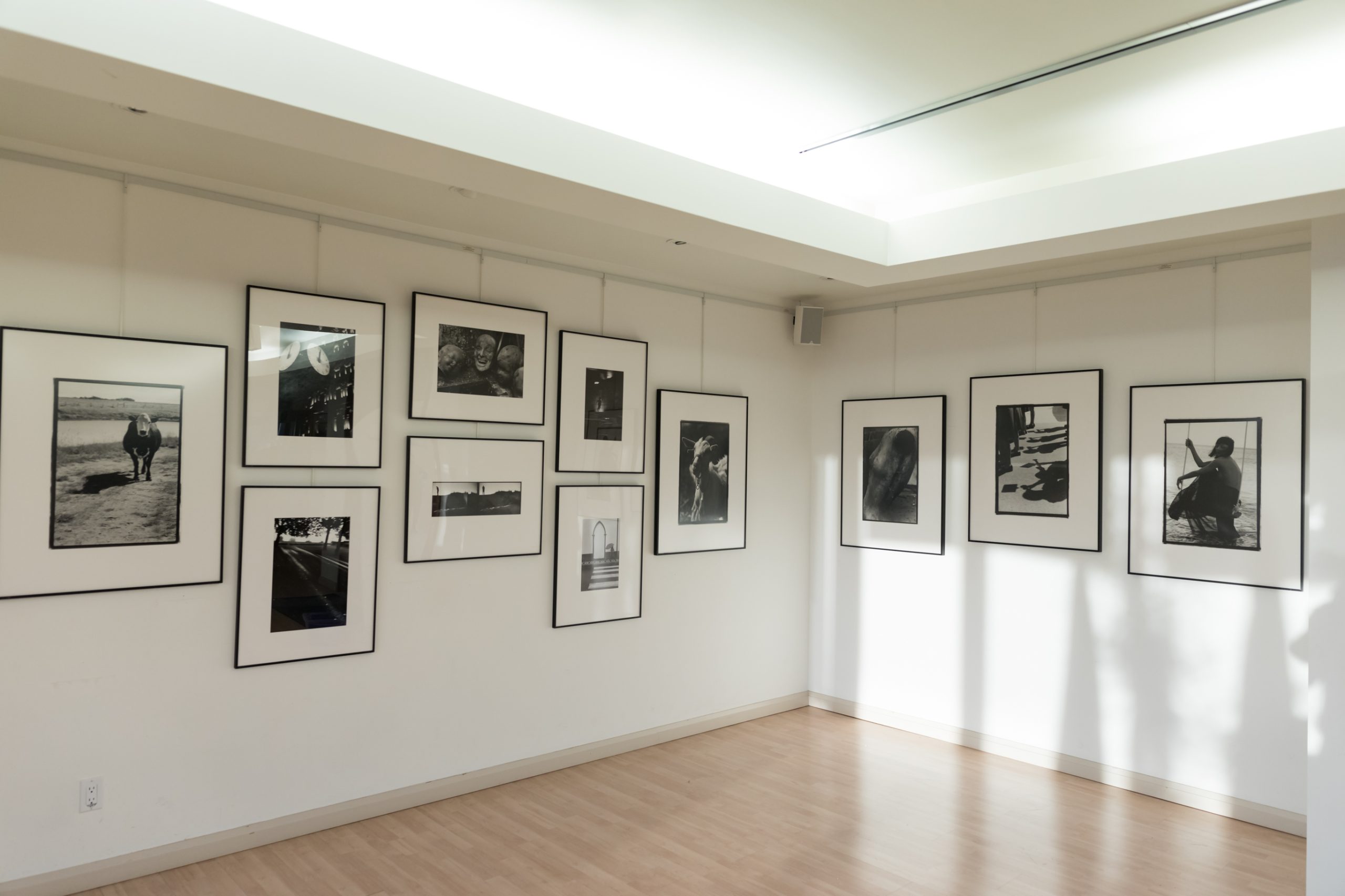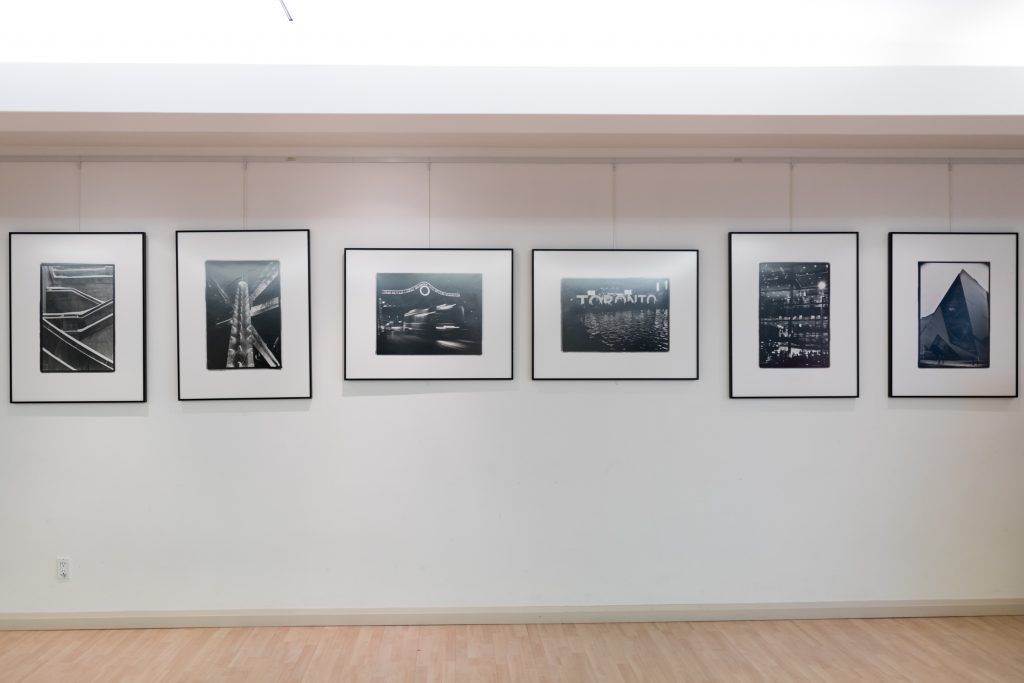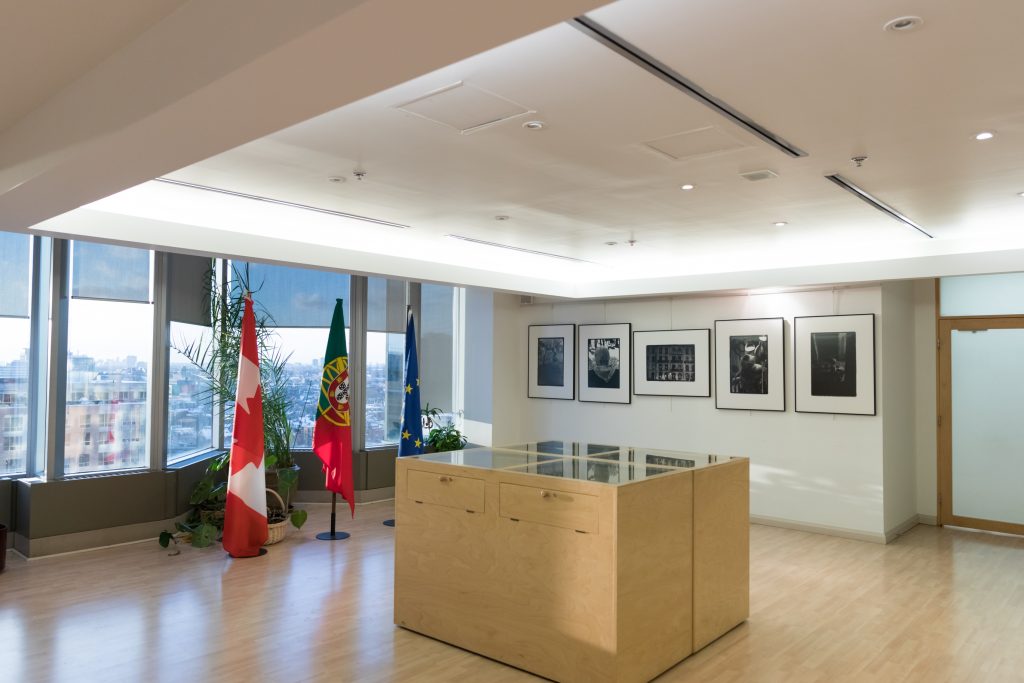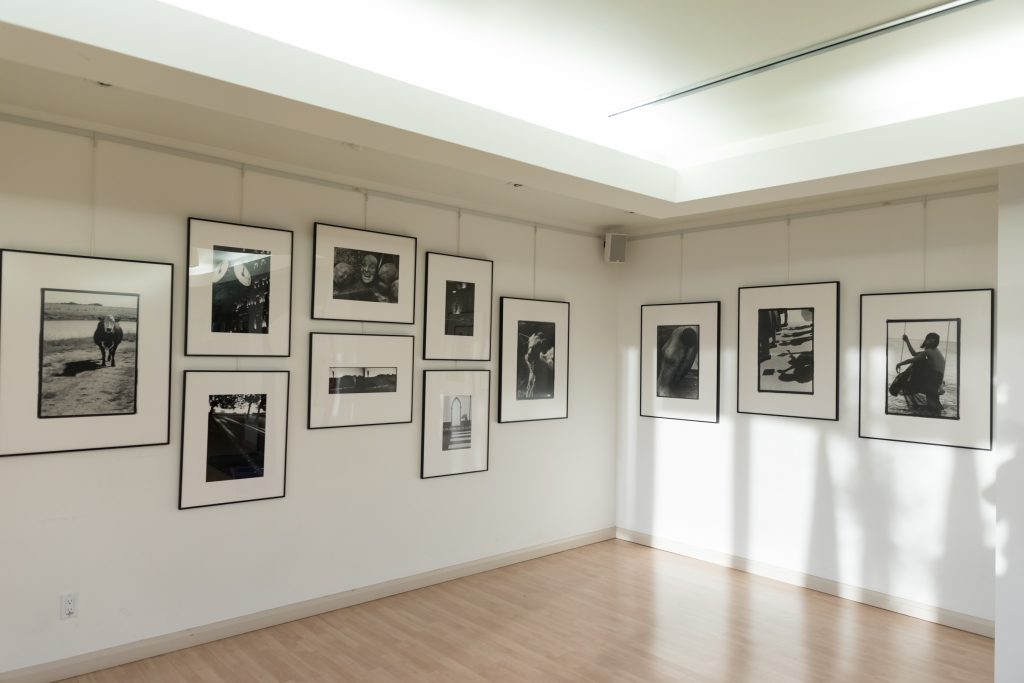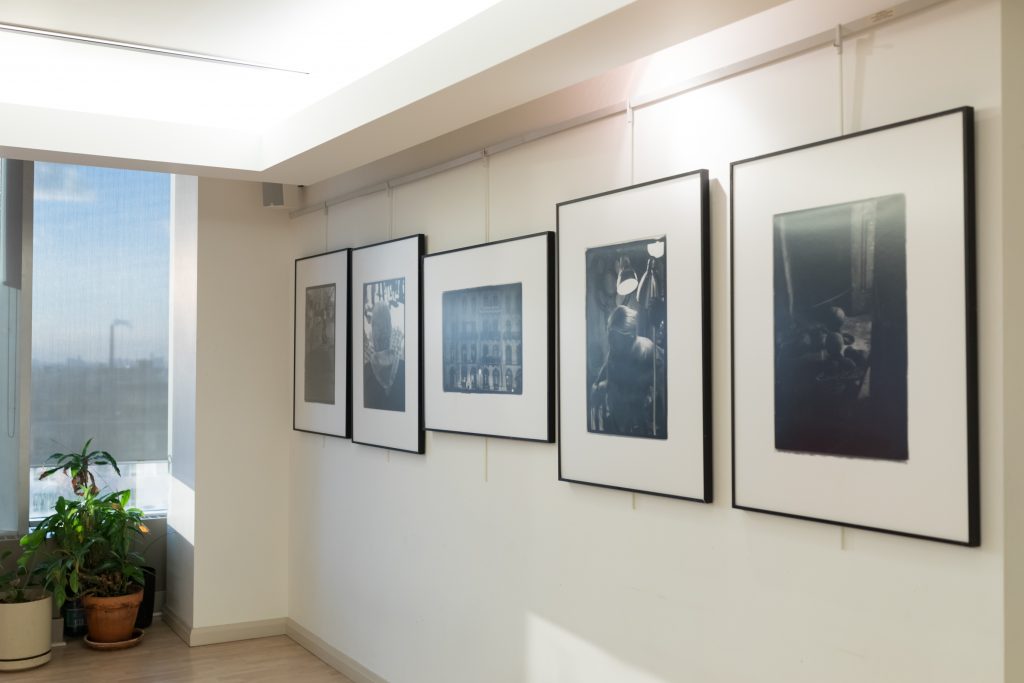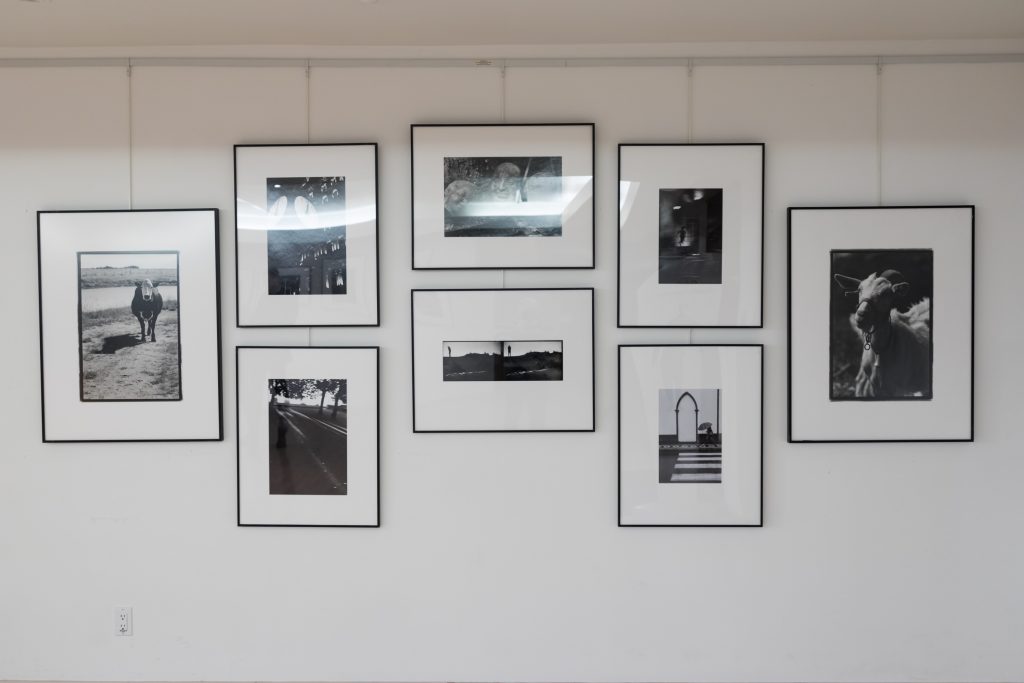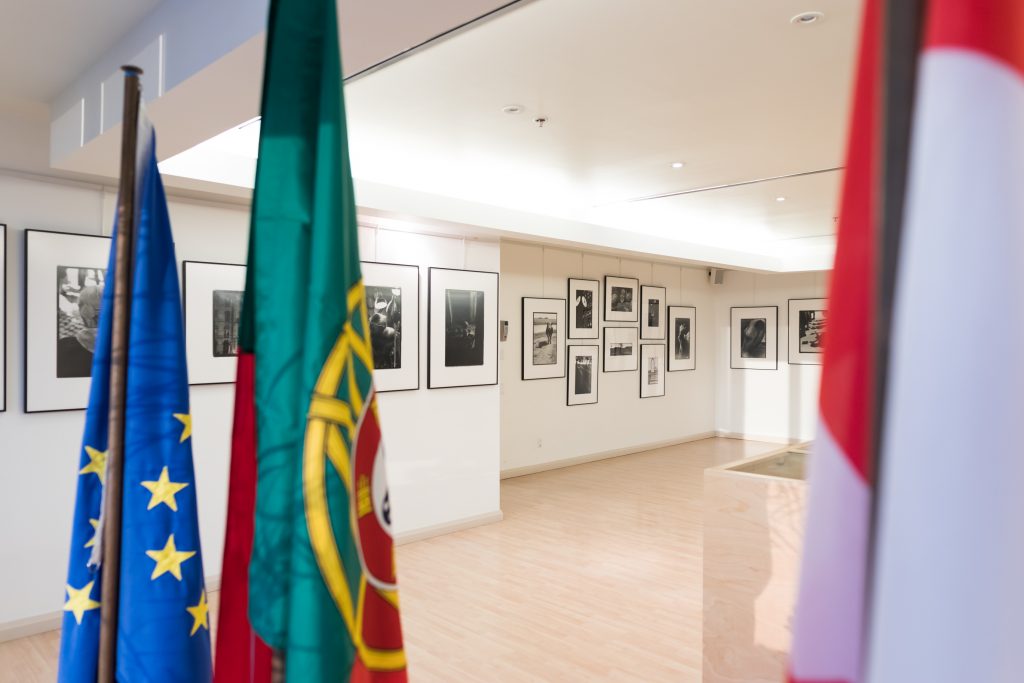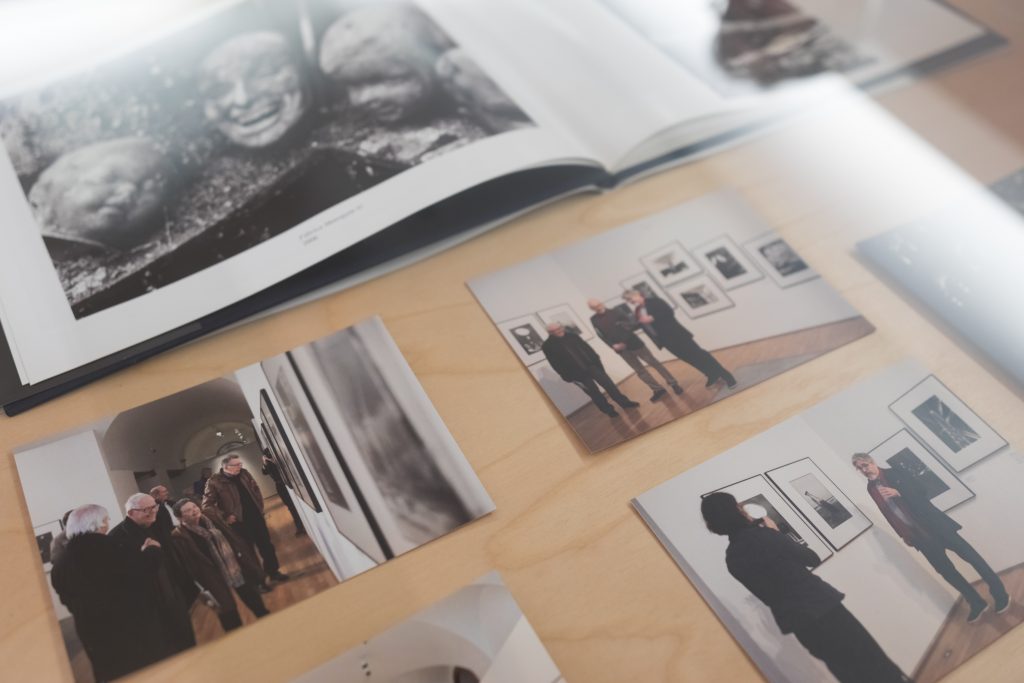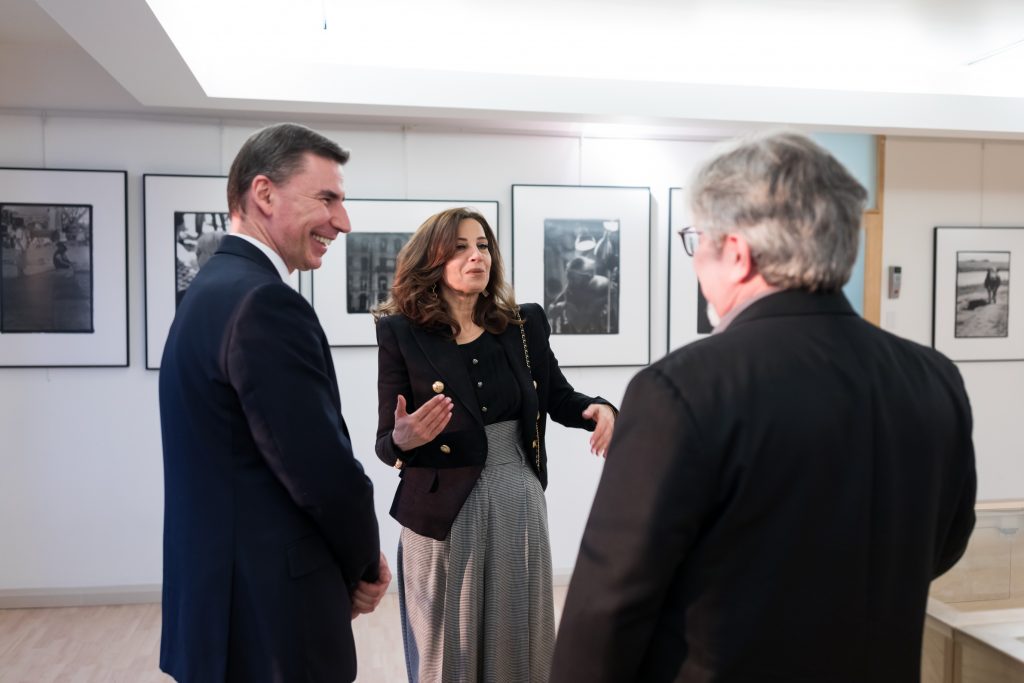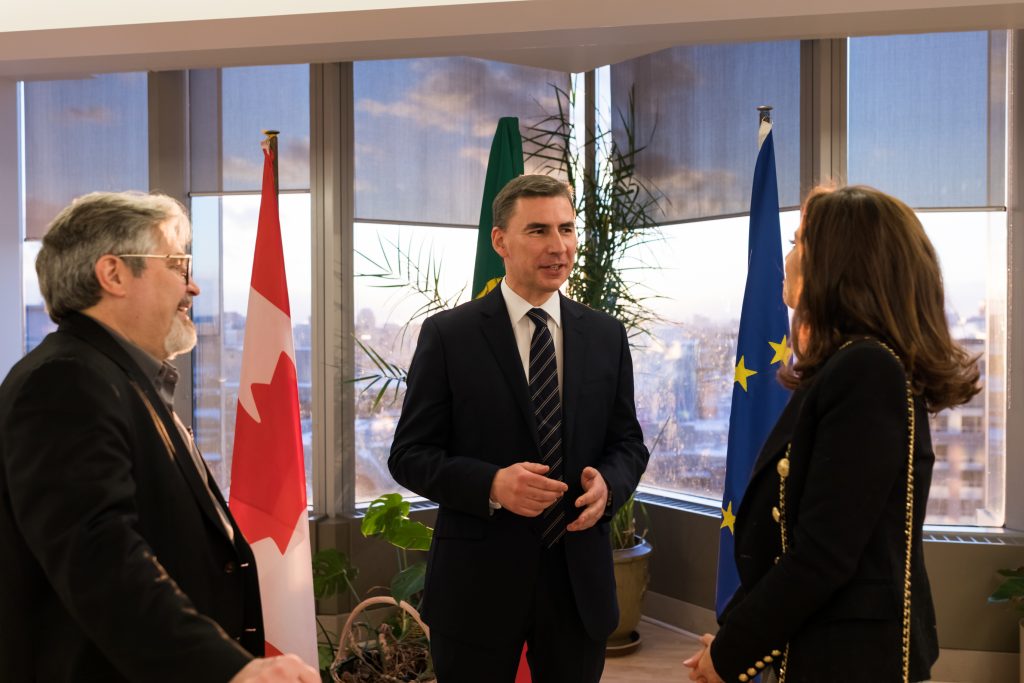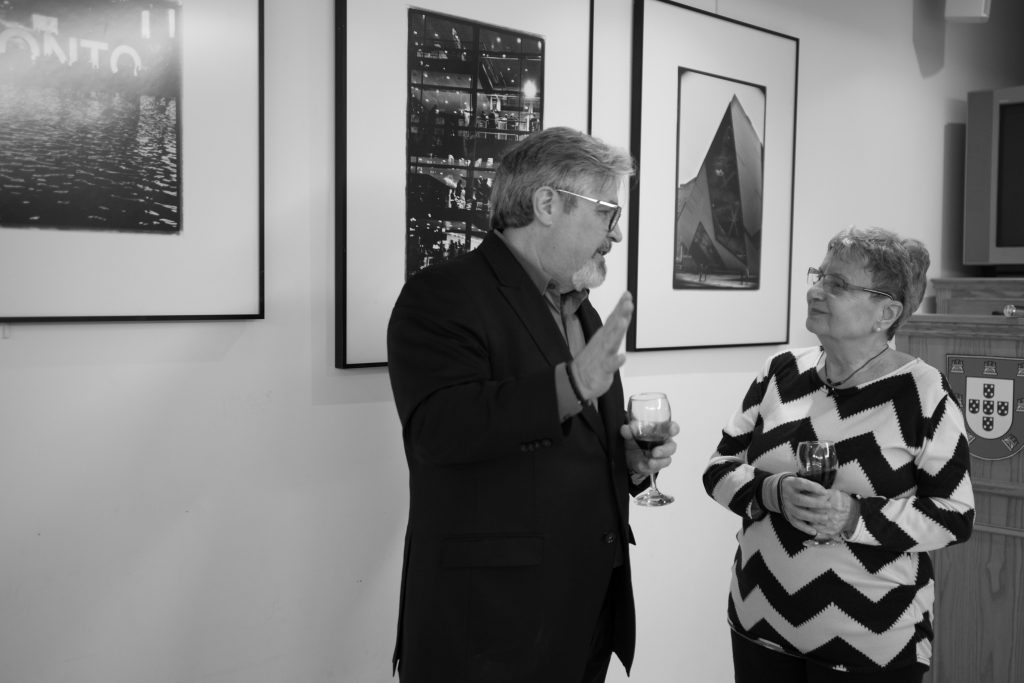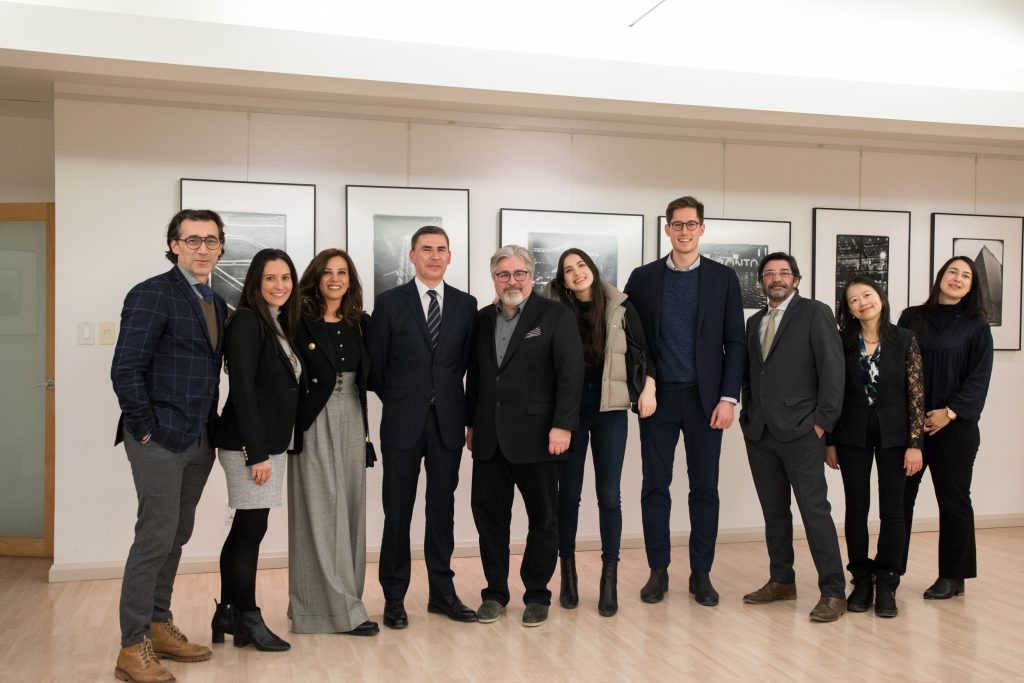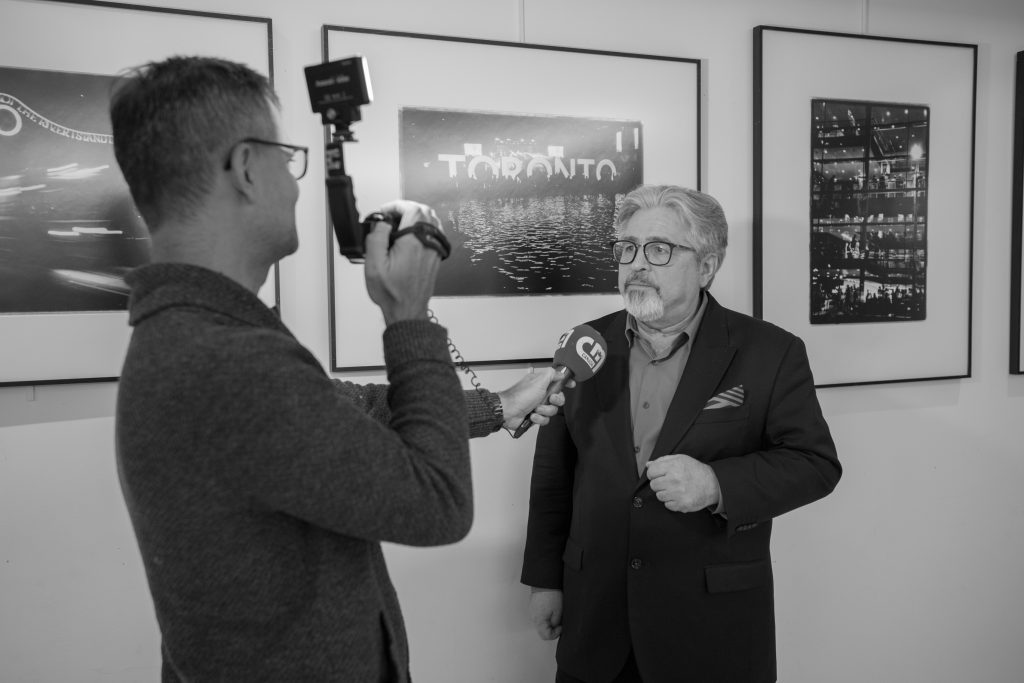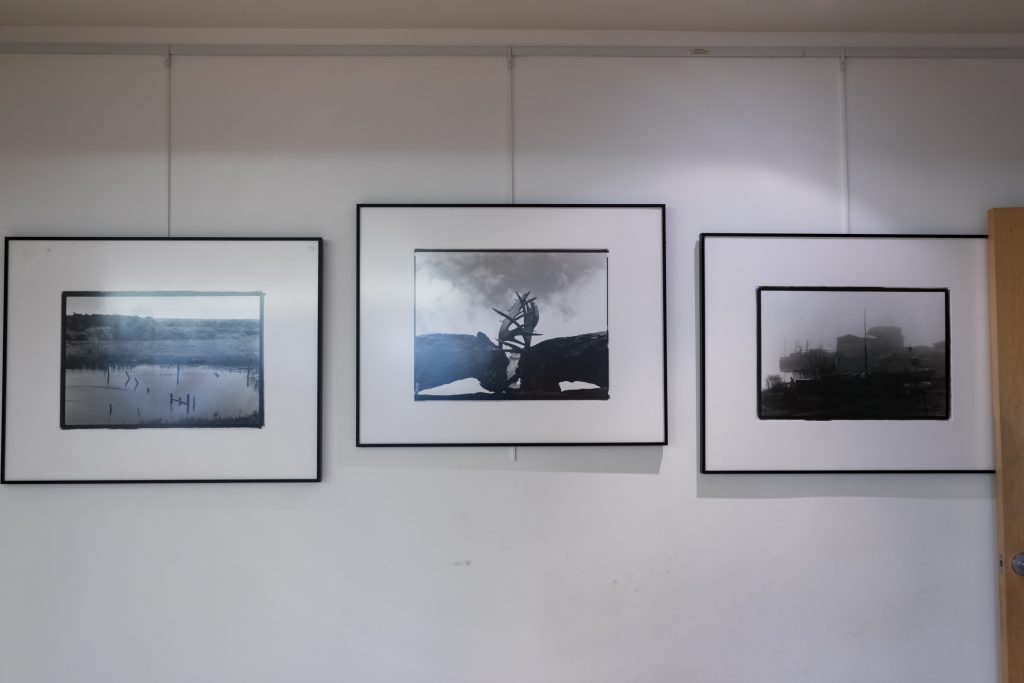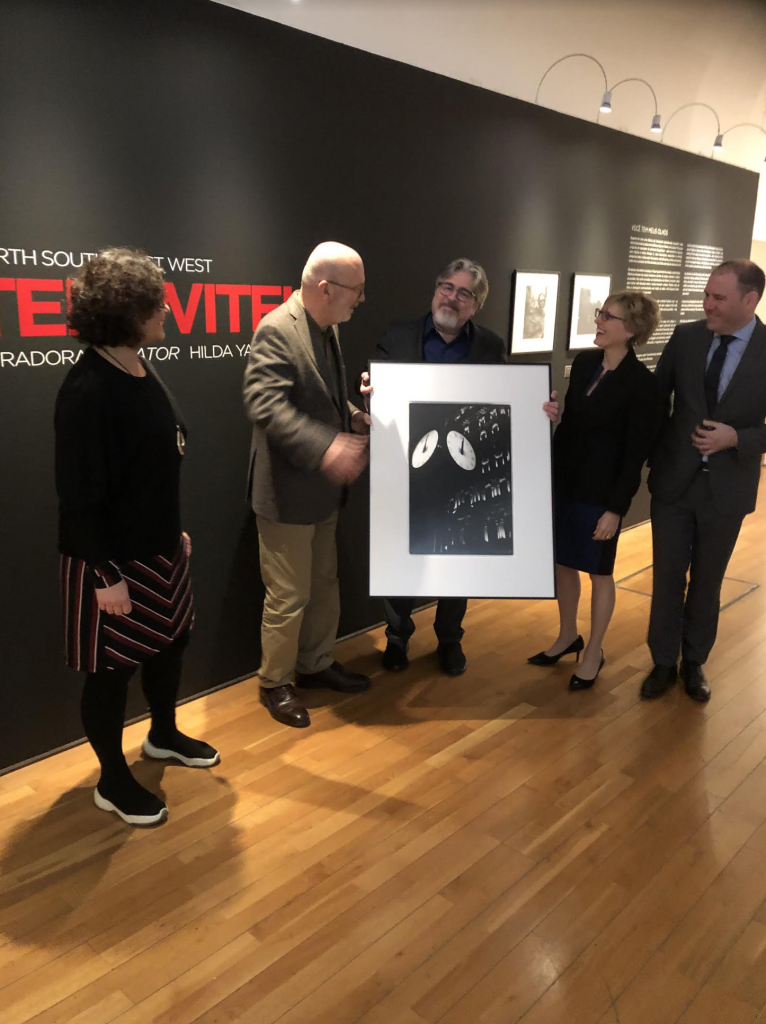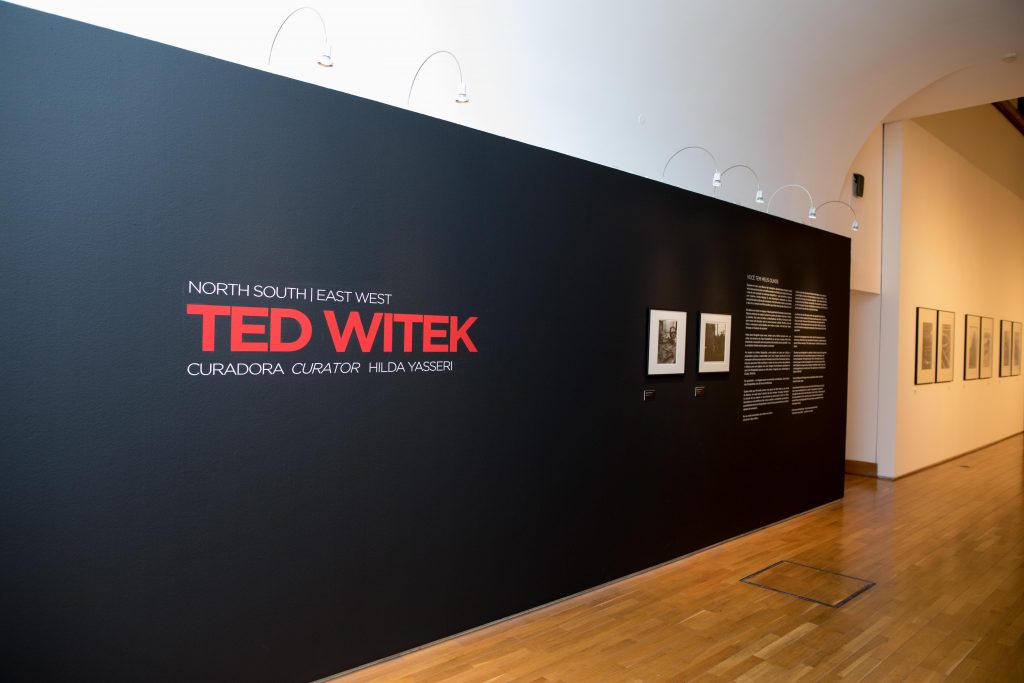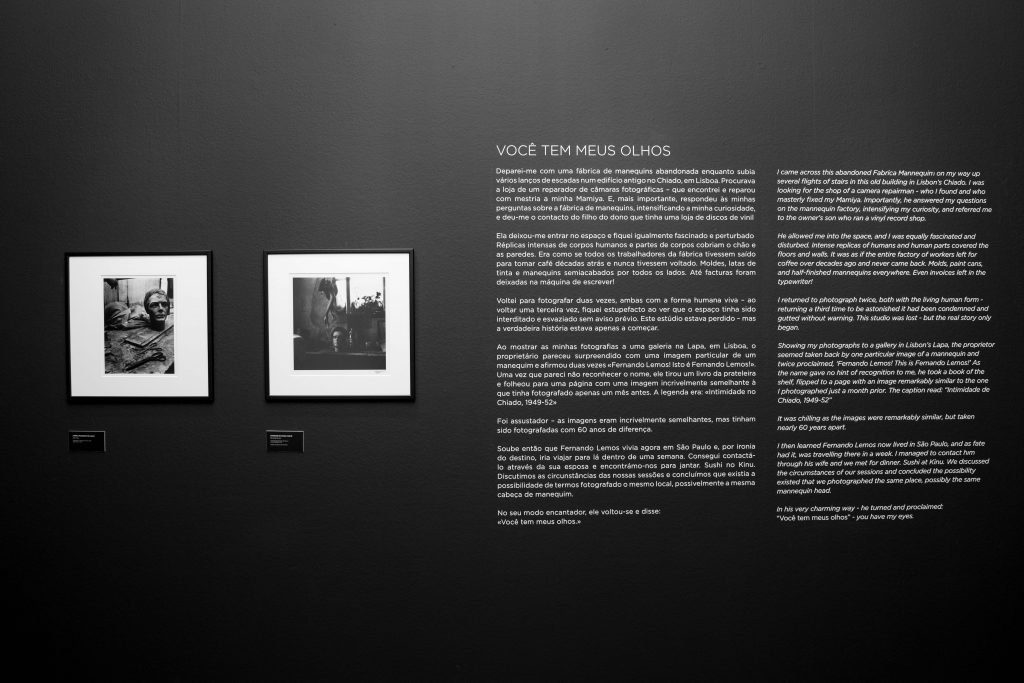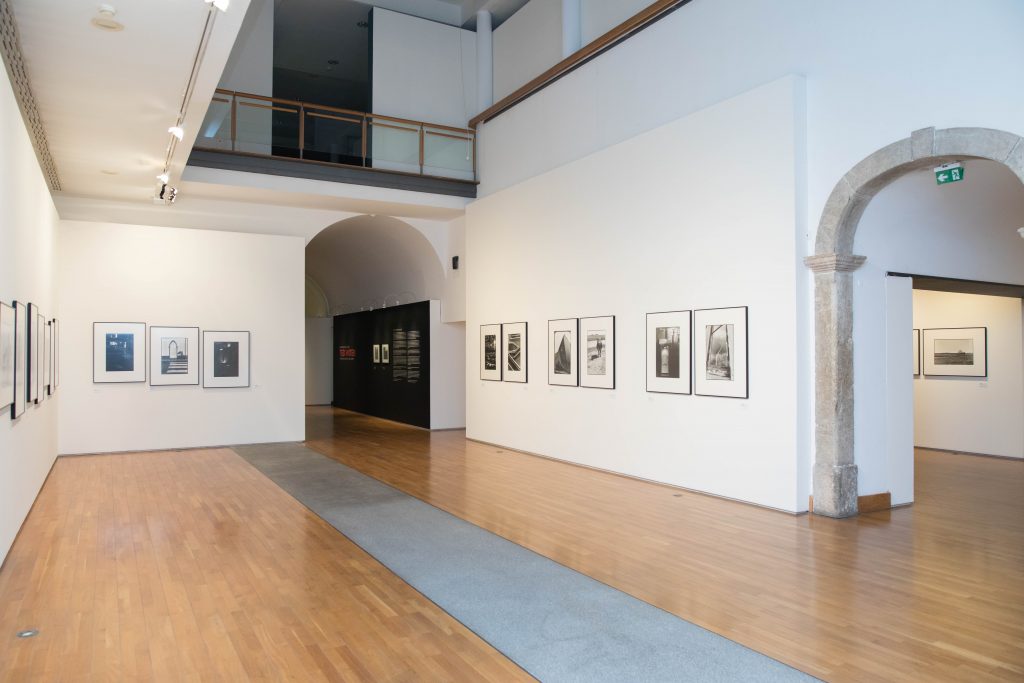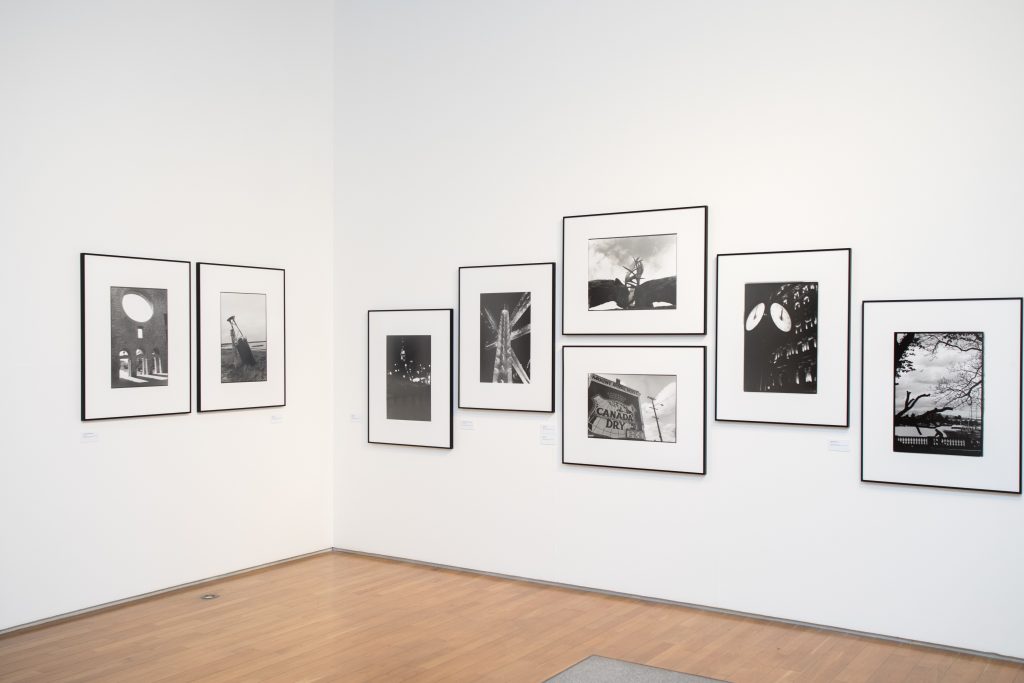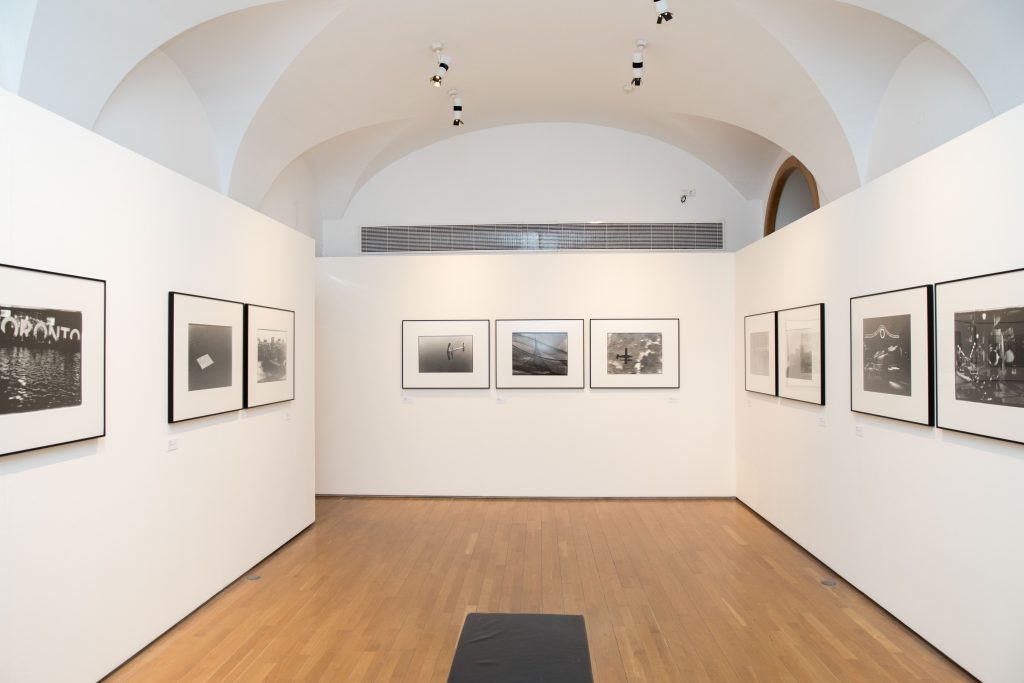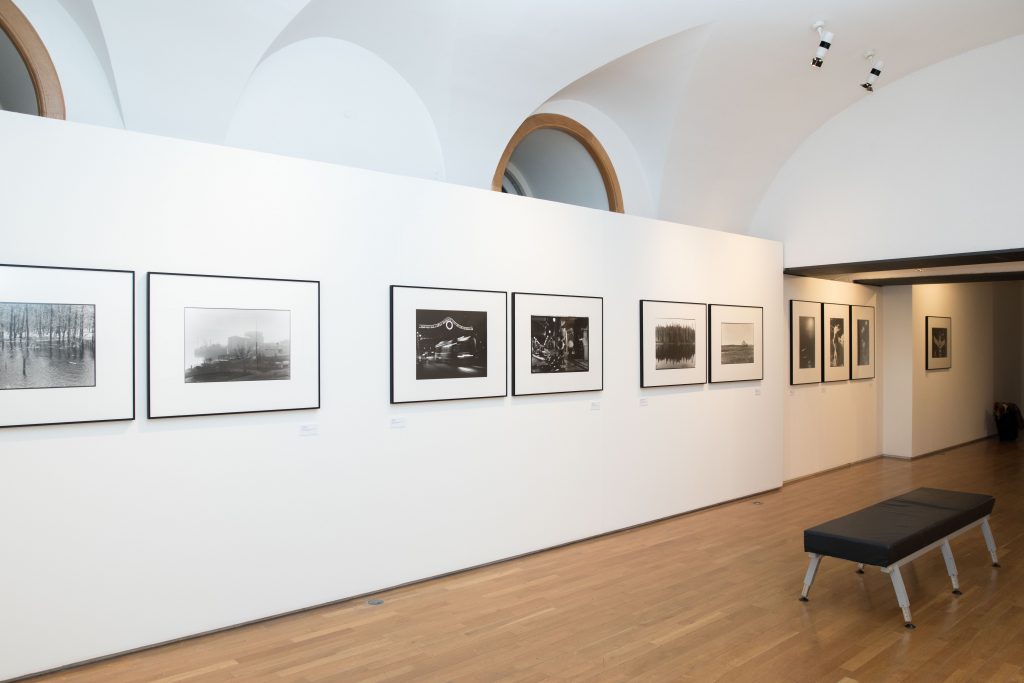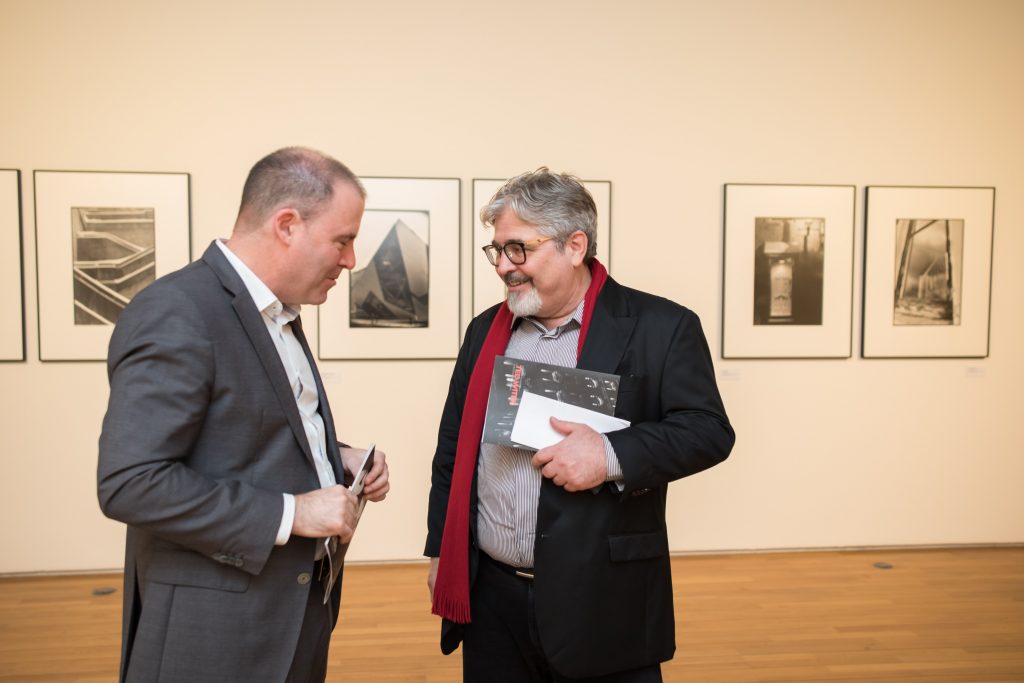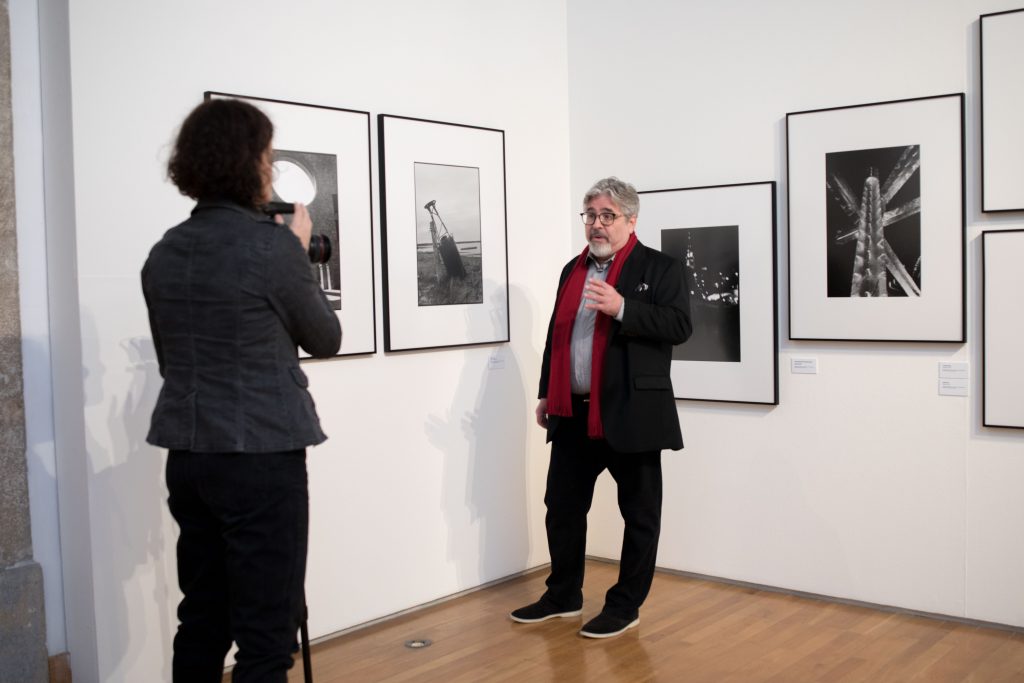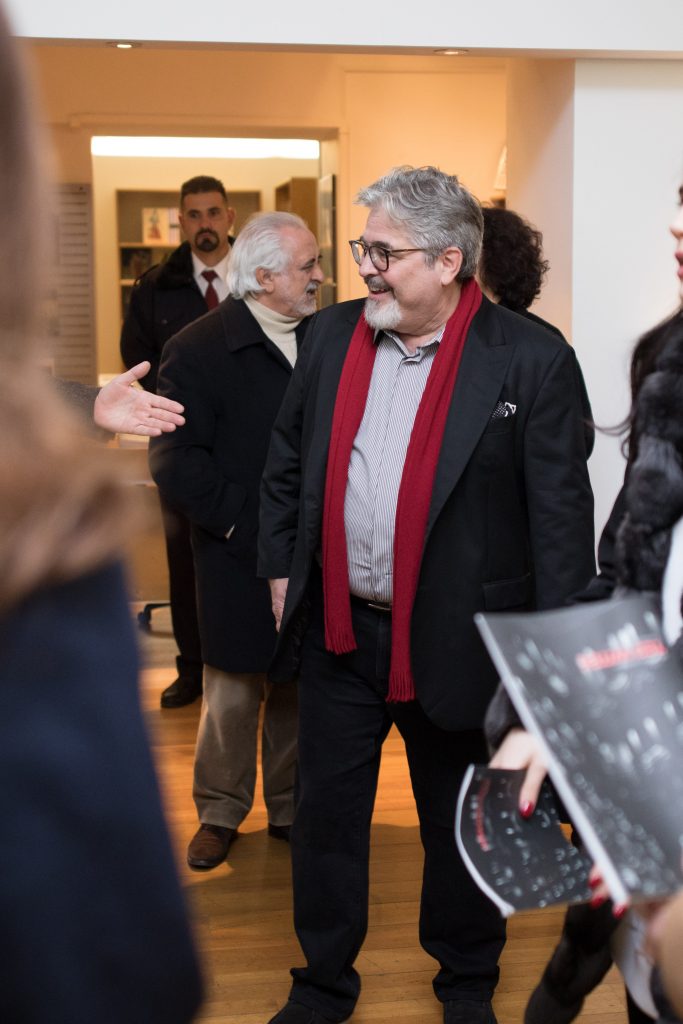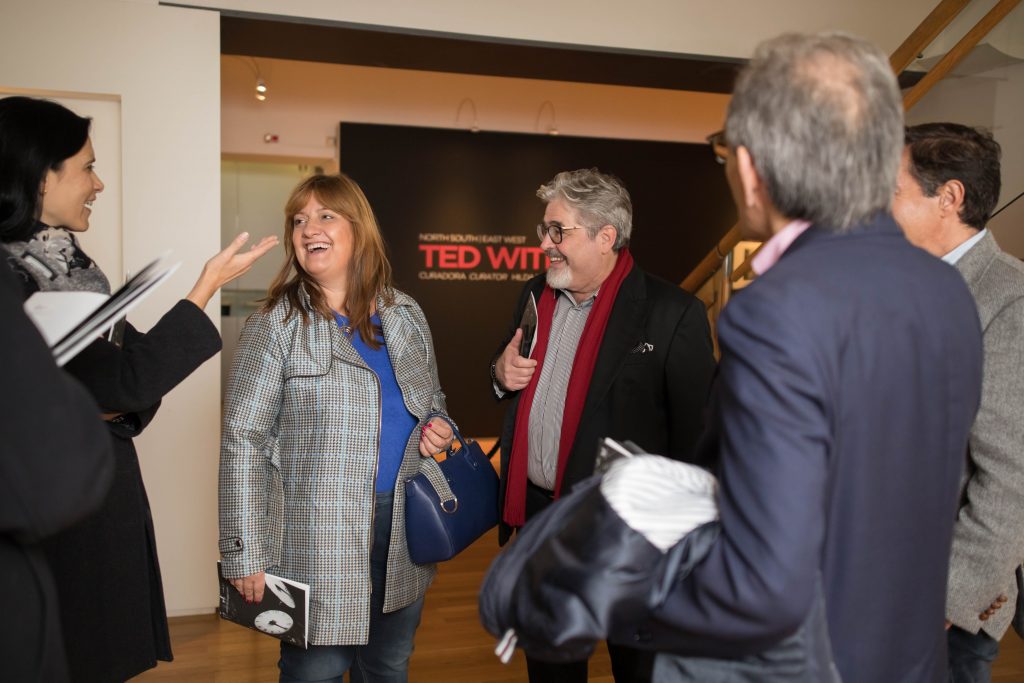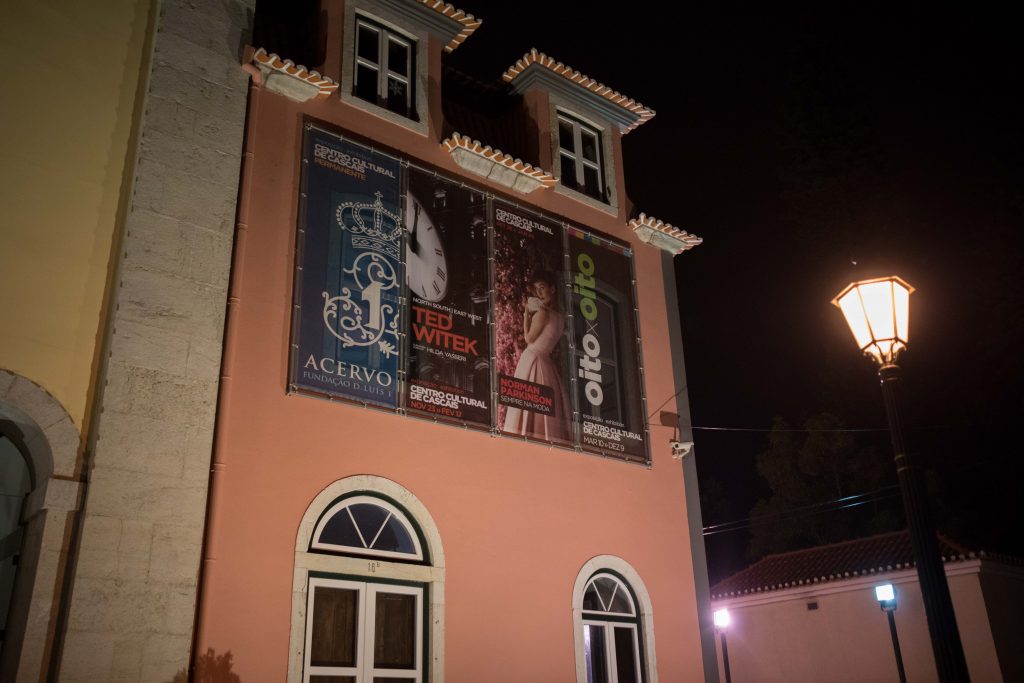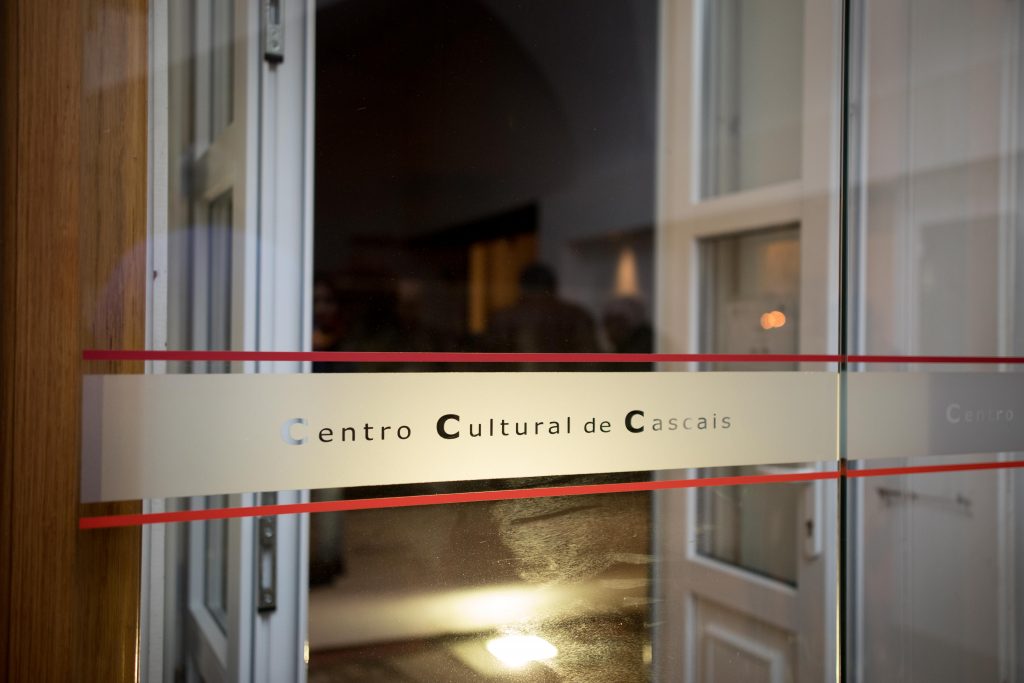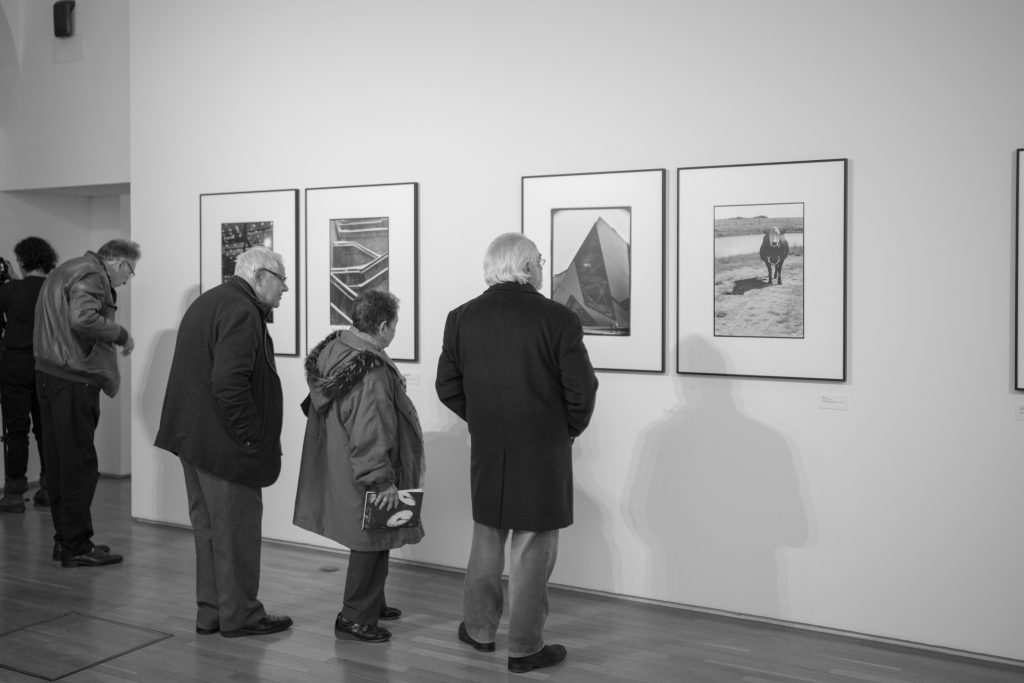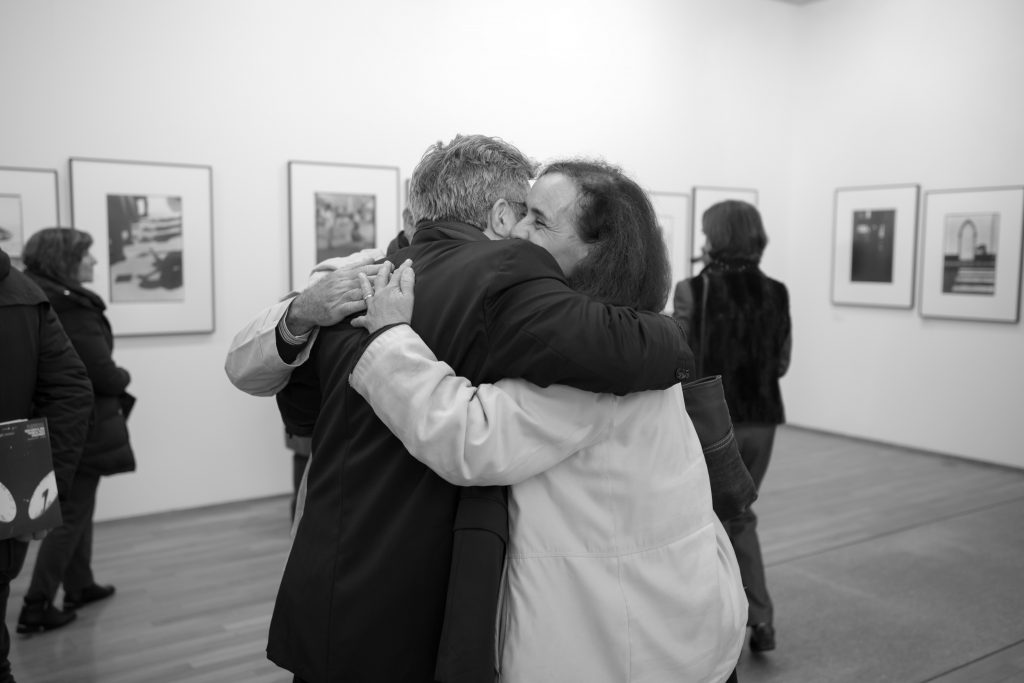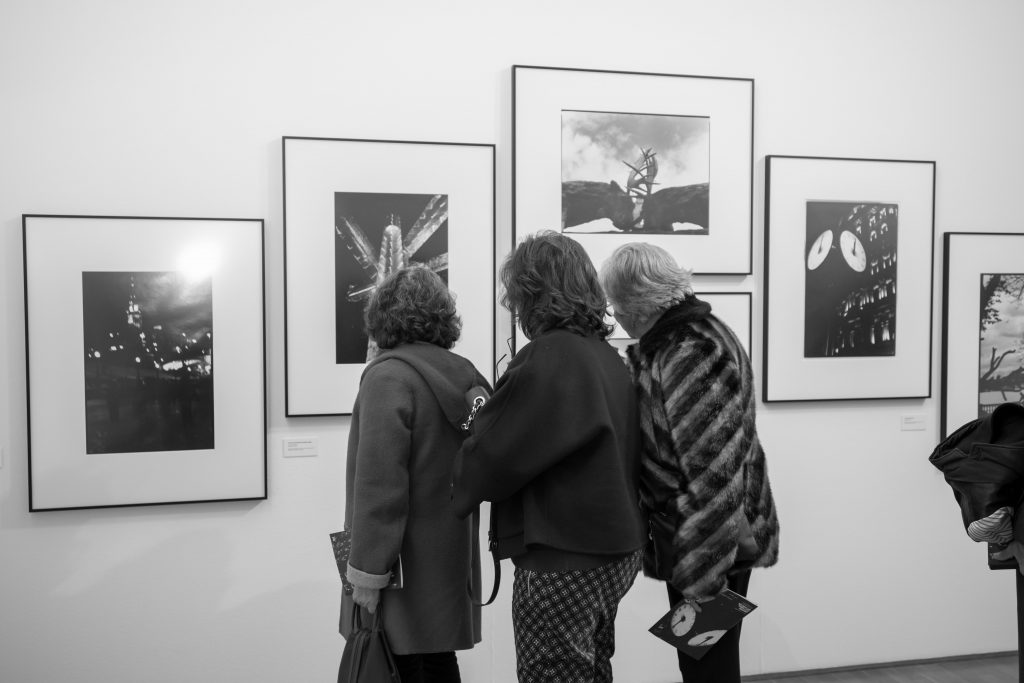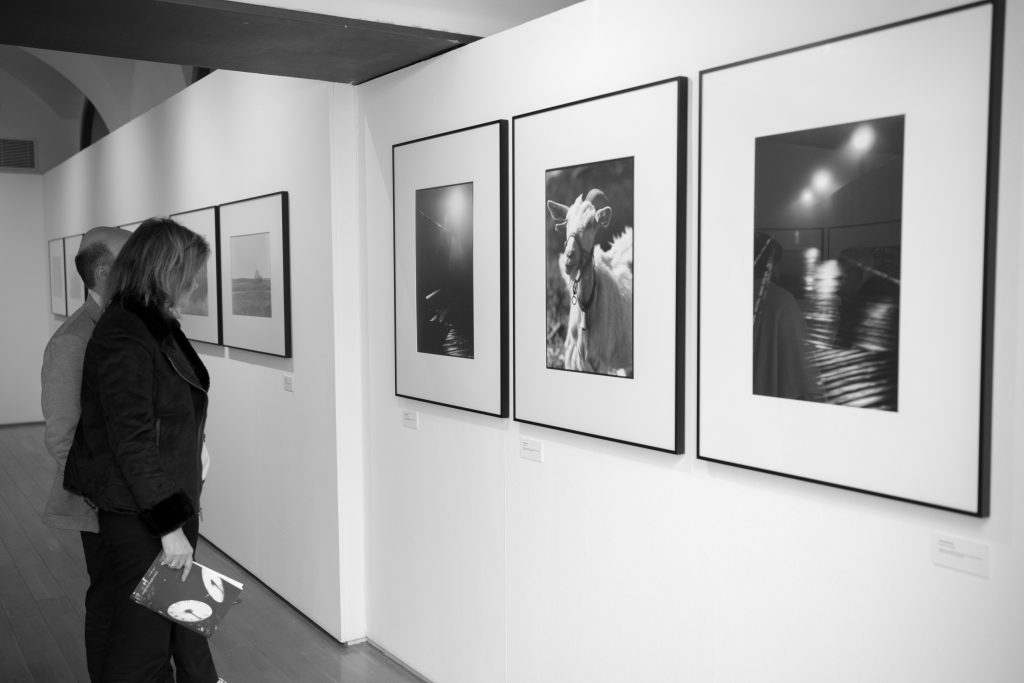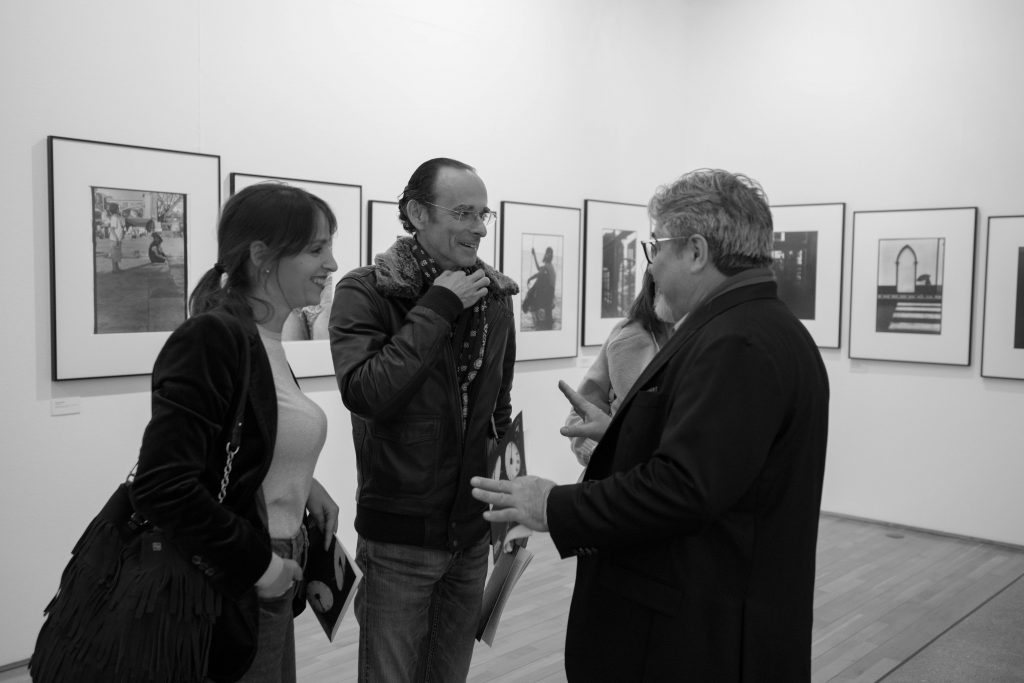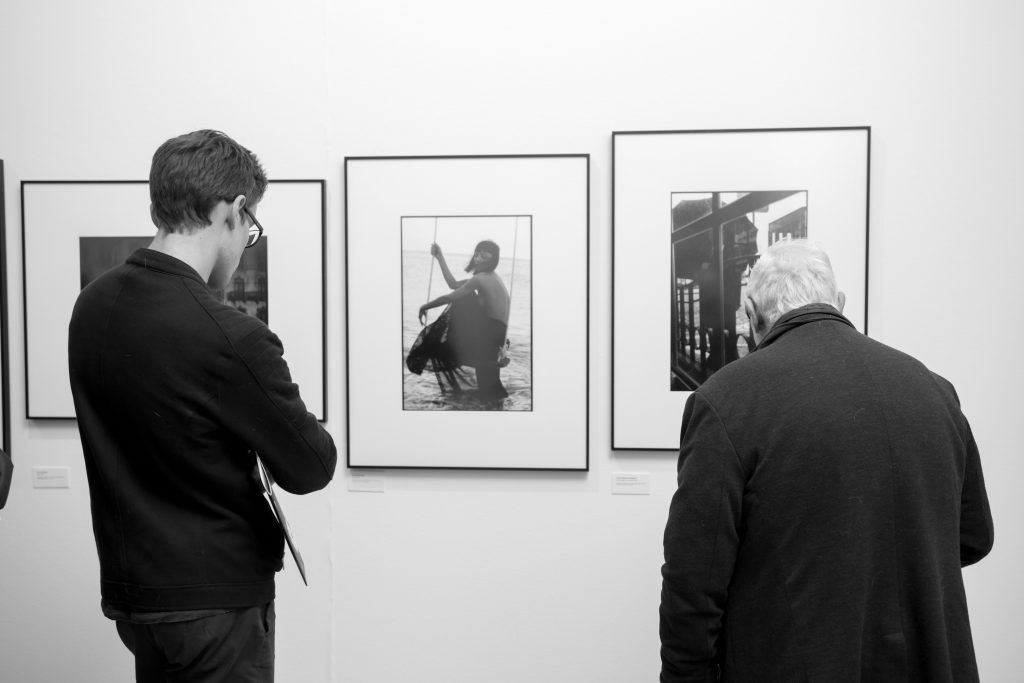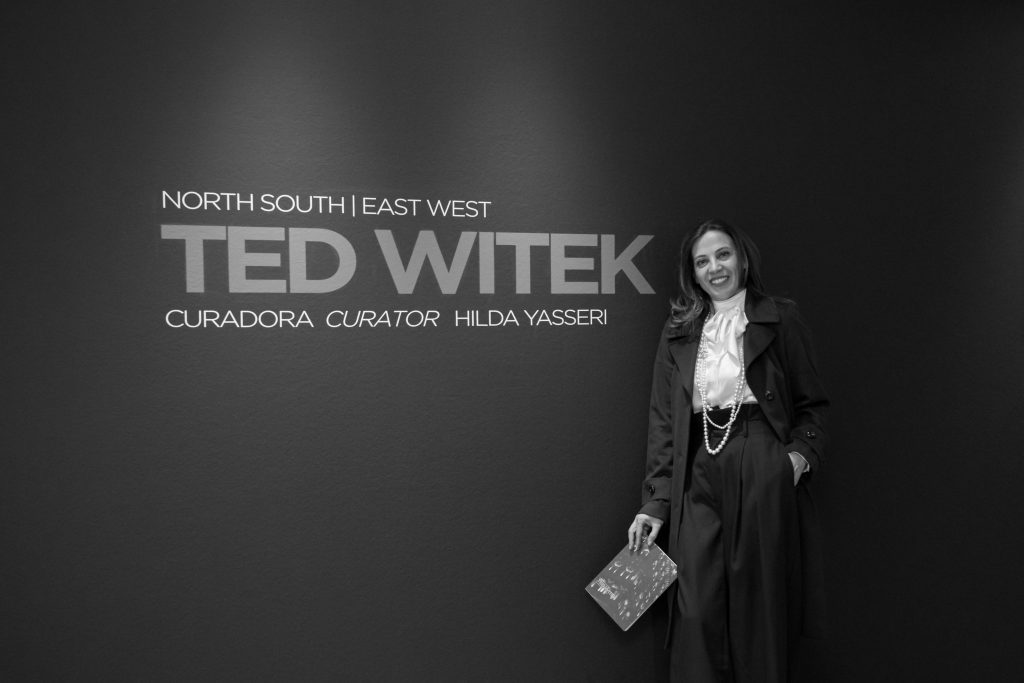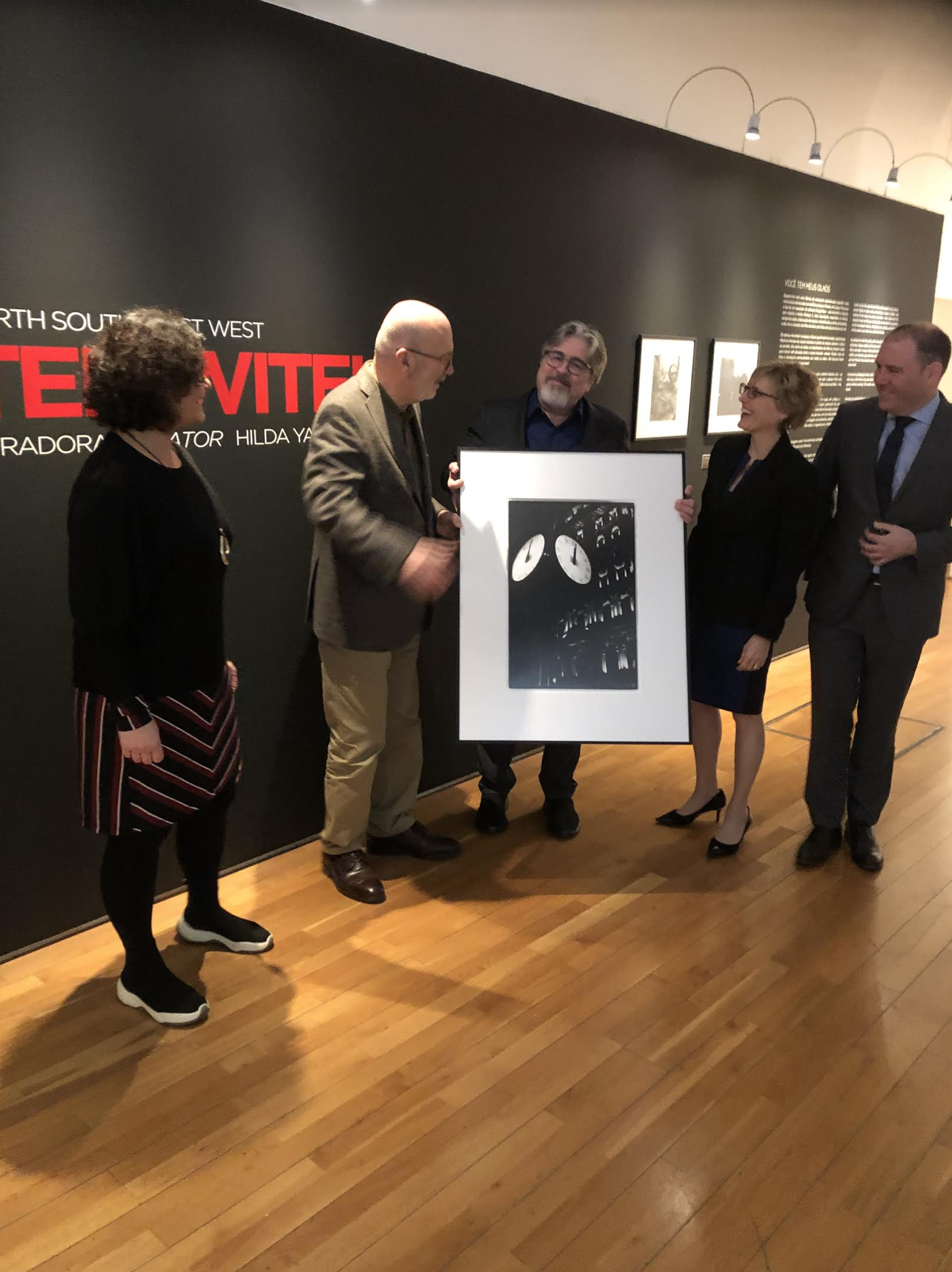
With sincere gratitude to the Cultural Center of Cascais and the Canadian Embassy in Portugal. PHOTO: This week’s closing reception of North South, East West in Lisbon
The image St. James Hotel, Montreal was chosen for the Foundation’s permanent collection. Picture l to r : Isabel Alvarenga (Museum Director), Salvato Teles de Menezes (President of Foundation), TedWitek, Lisa Rice Madden (Ambassador of Canada to Portugal) and Joël Monfils (Conseiller to Ambassador).
Photo by Vitor Fortuna
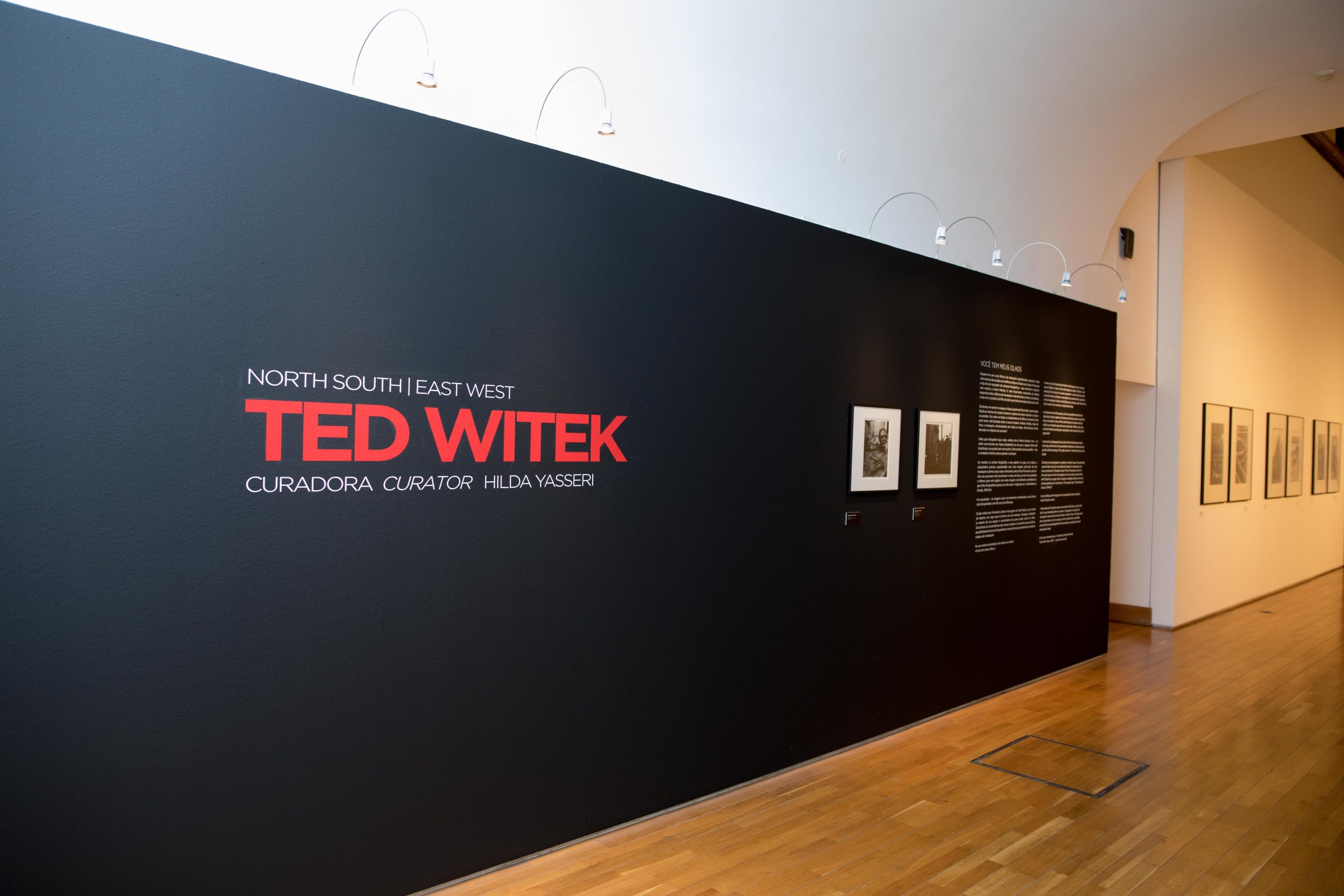
North South, East West
Ted Witek (1957- ) was born and raised in Connecticut. He left the United States for Germany in 2001, moving to Portugal in 2004. He immediately fell in love with the country and its people.
Having the artistic good fortune to travel many times to the North and South of Portugal as well as to Madeira and the Azores, Ted found the country among the most visually stimulating places that he has visited. Whether watching youngsters jumping from all heights in the hot sun into the Douro River, discovering an abandoned mannequin factory in Chiado, awaiting fishermen returning to shore in Sesimbra long before sunrise, or observing the biker celebrants of the Concentração de Motos in Faro, Ted was continuously inspired to capture a visual story.
Learning he would move to Canada in 2008, Ted immediately purchased a home in Azoia at Cabo Espichel where he now keeps a studio.
In 2012, Ted photographed all of beautiful Canada’s provinces for a new series entitled “Canadiana” with first edition prints auctioned for the Herbie Fund Charity at the Hospital for Sick Children in Toronto (SickKids). This series brought him between the world’s longest coastlines, from the east’s land’s end at Peggy’s Cove in Nova Scotia and as far west as Bennett Lake —- only reachable by floatplane over the icefalls and glaciers of Yukon.
Hilda Yasseri, Curator
***
Images from the opening night at Centro Cultural de Cascais, Portugal
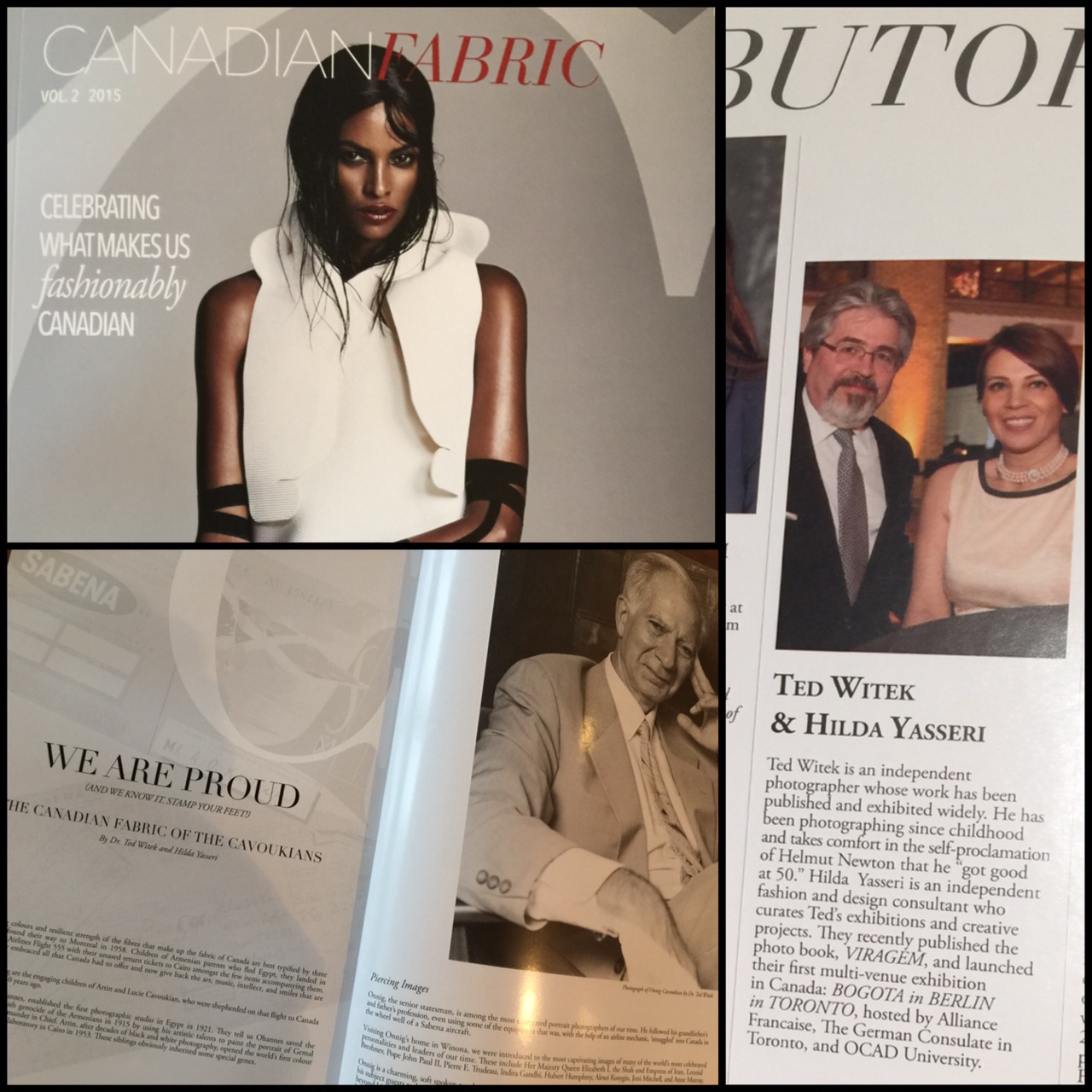
Ted, in collaboration with curator and Design Director Hilda Yasseri, once again contributed to the charitable art and fashion publication Canadian Fabric.
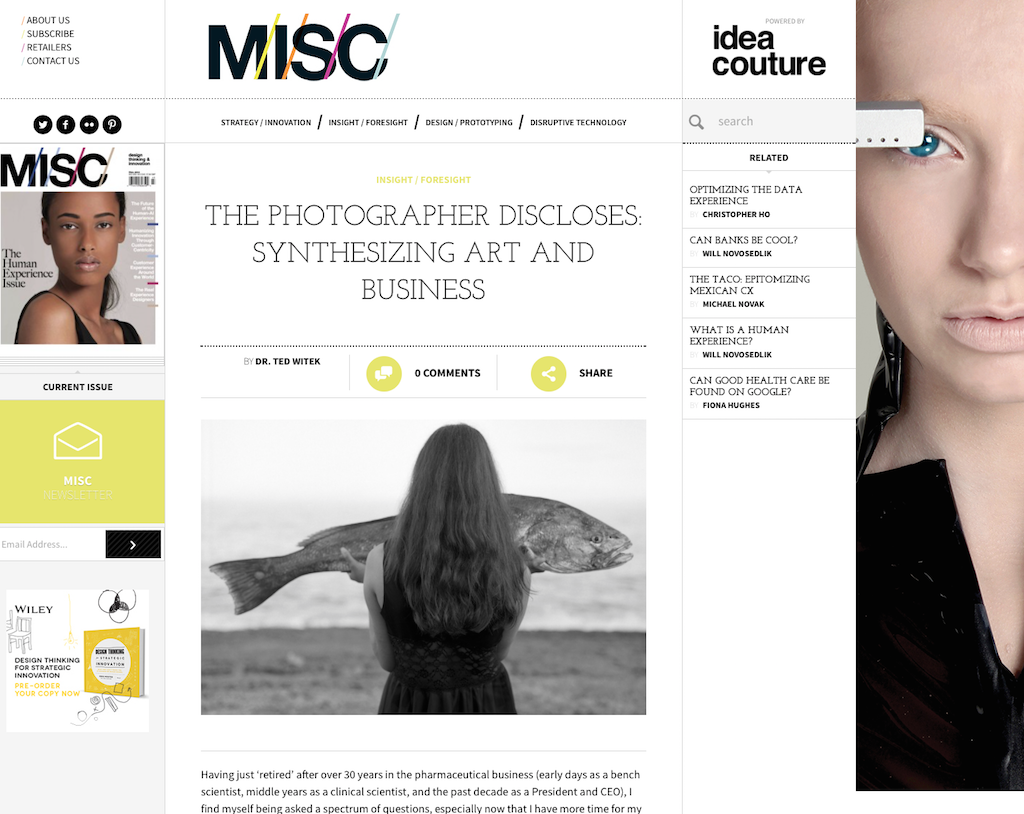
Having just ‘retired’ after over 30 years in the pharmaceutical business (early days as a bench scientist, middle years as a clinical scientist, and the past decade as a President and CEO), I find myself being asked a spectrum of questions, especially now that I have more time for my photography. Will I be pursuing it more? Perhaps open a gallery? What about continuing to work in healthcare? When I’m presented with these questions, I launch into my litany of how I will work to develop frameworks that prepare the heath care industry for “the second half.” I explain that for far too long, proving a drug or device as safe, effective, and pure was considered the end game when, in my opinion, it is only halftime.
No one should open champagne at halftime.
Our industry is actually quite good at bridging that first “valley of death” from concept to drug. I believe we do this better than anyone; imagine the Golden Gate Bridge over that valley. Where we really do fall short is in that ‘second half’ of moving drug to integrated health and happiness. Here, that “second valley of death” is bridged with a tightrope. Some stumble across; most simply fall off. How to integrate innovation into health systems requires a new design, new strategies, new policies, new competencies.
I’ve found most people that run art galleries are more difficult to deal with than drug benefit payers trying to be convinced of a premium price for a fourth to market me-too drug. I will, however, continue to integrate all my passions, photography included, towards insuring I stay fulfilled in business, in science, and in art. It has nothing to do with balance, but synthesis. For me it is very simple: In business, the numbers I produce speak. In science, the evidence I demonstrate speaks. In art, the photographs I print speak.
More complicated perhaps are the questions I now get about how my photography influences my style in business. In a profession where it is critical to understand that the absence of evidence is not the evidence of absence, I gave it further thought.
My approach to photography may give us some insight.
I am intrigued by the concept of seeing photographically—not photographing to document, but to transform perceptions. That requires an extreme alertness to ones environment.
I am pretty good at uniquely transforming perceptions. I preach the necessity of environmental alertness, remain true to my brand, know my core competencies, and outsource the other things to those that do it better. I embrace my trusted advisor and the hard facts when I do not have it right.
I also learned many of the technical aspects of lighting. I learned enough to know I will never use artificial light in my work. My cameras and film are all I bring to photograph. Natural light is the main ingredient feeding the sensual mystery in most of my images.
I use film exclusively. Digital photographic technology is fascinating and has rightly found a dominant place in the commerce of image making. Just not my place. Technically, it may only make a difference in a very limited number of images, and I love when I find those limited circumstances. It really is a unique product.
Not being my core competency, I collaborate with only two master printers for my work. My color printer, Carol, works between Maine and New York City. My black and white printer, Antonio, works in Lisbon (when they are not on holidays). They are an extension of my eyes. A long distance extension.
My curator is my most trusted advisor. She is a master at being direct and providing guardrails of reality to my concepts. In doing so, she brings my work to a different level with her aesthetic congruency. When I see my work displayed in a gallery or book, it’s then I realize most the importance of a team.
A photograph does not lie, per se. I have seen many in my business life talk about ‘customer focus’ without talking to customers. They speak about alternative channels without knowing the sea into which the channels empty. They paint pictures of the world that fits their product instead of being honest about how their products do and do not help our world. Yes, they are painters.
As Susan Sontag says, “the painter constructs, the photographer discloses.”
Dr. Ted Witek recently retired as President and CEO of Boehringer Ingelheim Canada Ltd, after 23 years with the corporation. He is currently a healthcare advisor, director, scholar, and photographer based in Toronto and Lisbon.
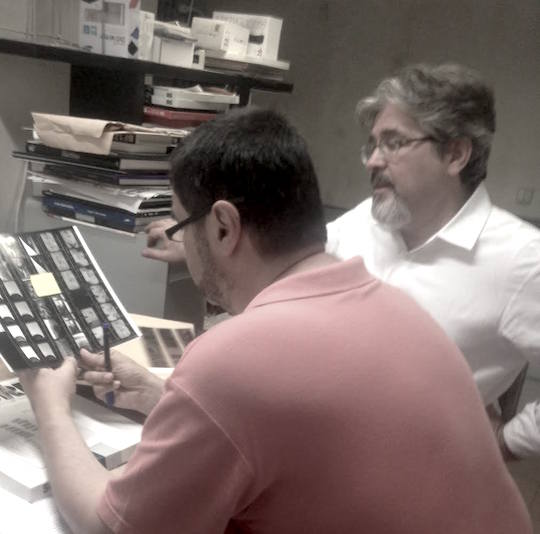
Ted recently visited Antonio José Costa in Lisbon to finalize the last printing for our upcoming shows “Bogota in Berlin in Toronto” and “You are Sleeping in Holy Rooms”.
Antonio’s retouching is not with Photoshop but with a fine brush and special dye to insure no blemishes—stunning silver gelatin prints on fiber now arrived in Toronto…. HYR
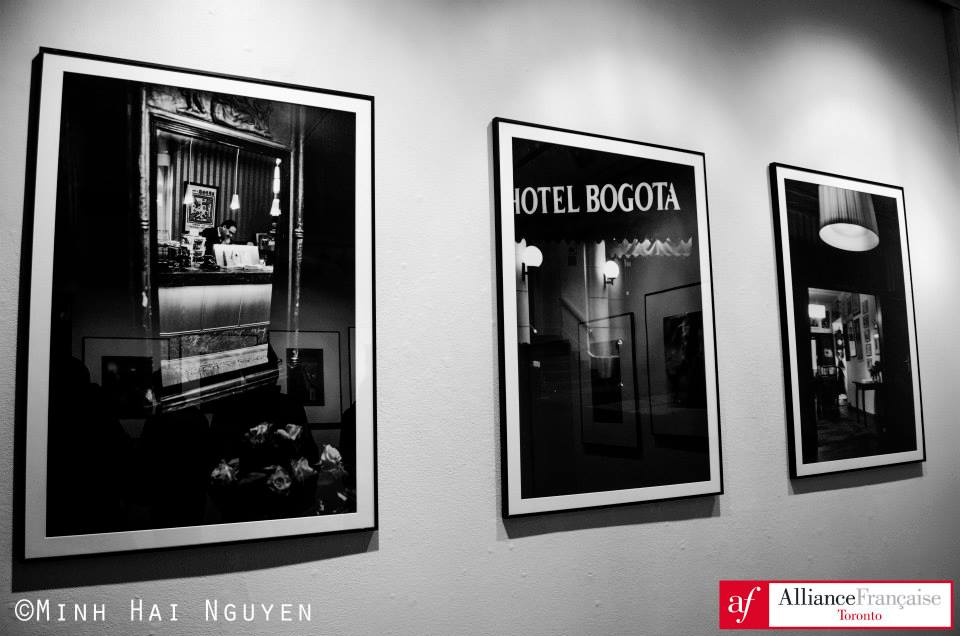
In 2004 photographer Ted Witek discovered Berlin’s historic Hotel Bogota, host to some of the biggest political, cultural and literary figures of the twenties and thirties. Among them: jazz legend Benny Goodman, avant-guard fashion photographer Yva – and her prized pupil Helmut Newton, who’s prolific and erotic photos were later to become a mainstay of Vogue and other fashion books…

